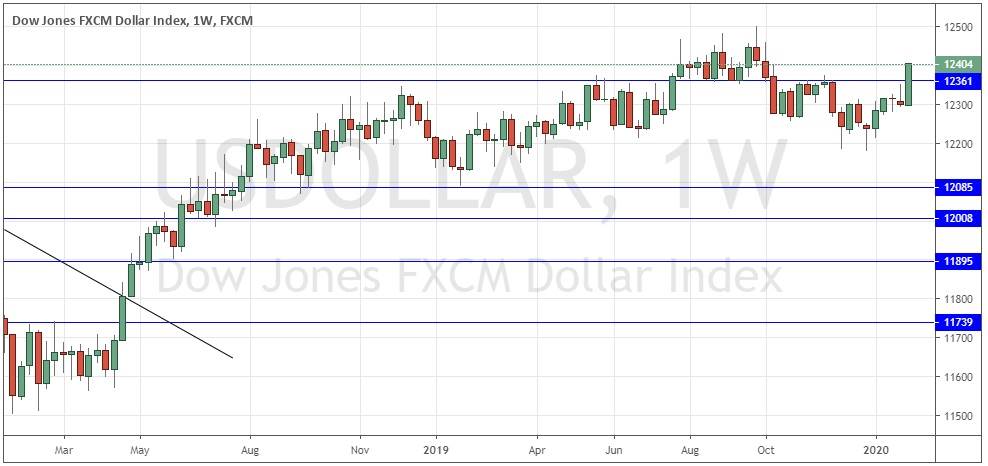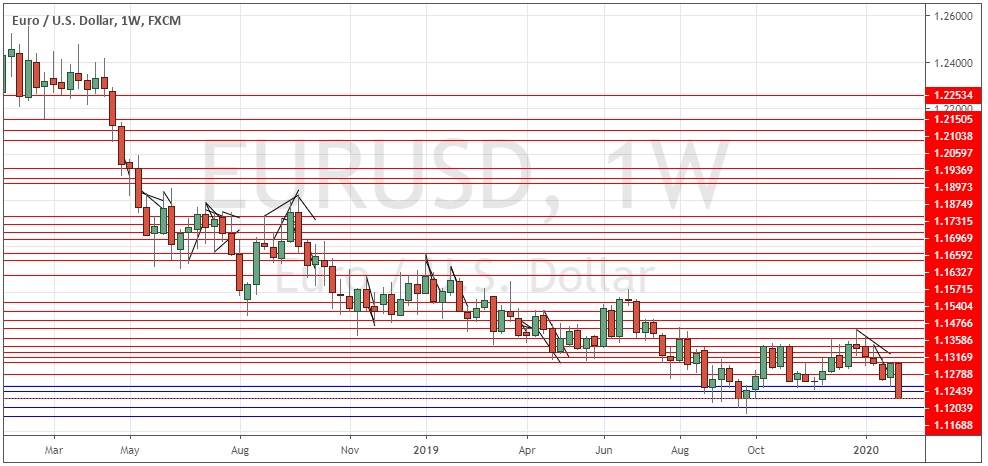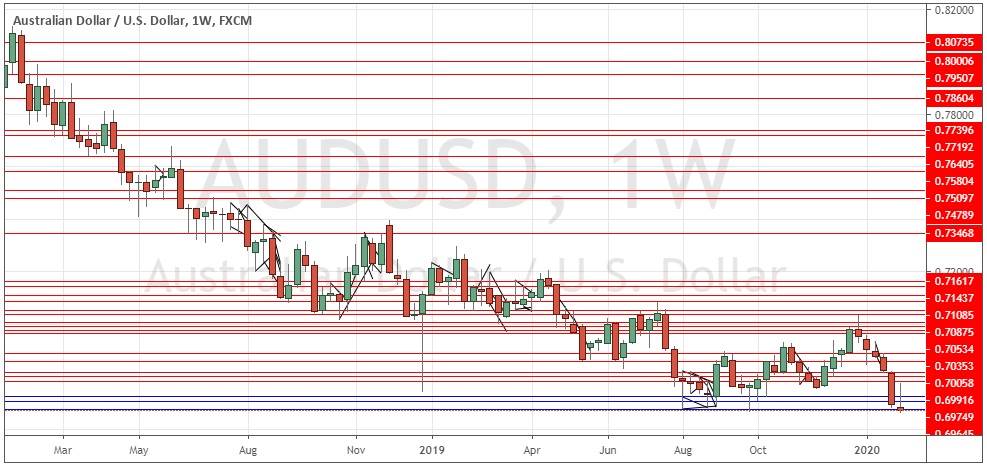The difference between success and failure in Forex trading is very likely to depend upon which currency pairs you choose to trade each week, and not on the exact trading methods you might use to determine trade entries and exits. Each week I am going to analyze fundamentals, sentiment and technical positions in order to determine which currency pairs are most likely to produce the easiest and most profitable trading opportunities over the next week. In some cases, it will be trading the trend. In other cases, it will be trading support and resistance levels during more ranging markets.
Big Picture 9th February 2020
In my previous piece last week, I forecasted that the best trade was likely to be long of Gold half in USD terms and half in AUD terms. Over the week, Gold fell by 1.23% against the USD while the AUD/USD currency pair fell by 0.13%, so this was clearly a losing trade.
Last week’s Forex market saw the strongest rise in the relative value of the U.S. Dollar, and the strongest fall in the relative value of the British Pound.
Fundamental Analysis & Market Sentiment
Fundamental Analysts are now tending to see less chance of a U.S. rate cut after last week’s strong economic data which surprised the market, sending the U.S. Dollar higher almost everywhere. The non-farm payrolls employment change came in very strong at 225 thousand new jobs when only 163 thousand had been expected. U.S. manufacturing data also came in stronger than had been expected.
The British Pound and the Euro saw weaker sentiment as the British government, having secured Brexit, is now in a much stronger negotiating position with the E.U. and made it clear last week that it is prepared to walk away at the end of the 2020 transition year without a trade deal.
The Chinese coronavirus outbreak may have stabilized, but there is now some data suggesting that the outbreak has not peaked yet. Stock markets broadly rose last week, but it looks likely that we will see some short-term profit taking with risk sentiment perhaps deteriorating somewhat over the weekend.
The Australian Dollar continues to look weak near very long-term lows and remains extremely vulnerable to any fresh risk-off sentiment driven by the Chinese coronavirus.
Technical Analysis
U.S. Dollar Index
The weekly price chart below shows last week printed a large and very bullish engulfing candlestick. This strongly bullish move pushed the price cleanly through the former resistance level at 12361, which is a bullish sign, as is the fact that the candlestick closed very near its high. The long-term trends are now more bullish, with the price only just below its level from 6 months ago and clearly above its level from 3 months ago, which indicates a weak but basically bullish trend. Therefore, there is technical evidence that we are likely to see a further upwards move in the U.S. Dollar Index next week.
EUR/USD
The EUR/USD currency pair just made its second-lowest weekly close in nearly three years. The weekly candlestick was large and closed very near its low, which are bearish signs. There is a slow but convincing long-term bearish trend and the price looks likely to fall further over the coming week.
AUD/USD
The AUD/USD currency pair just made its lowest weekly close in more than ten years. The weekly candlestick was a bearish pin candlestick which closed very near to the bottom of its price range, which is a bearish sign.
Conclusion
This week I forecast the best trades are likely to be short of EUR/USD and AUD/USD.




